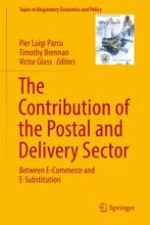This book addresses major issues facing postal and delivery services throughout the world. Worldwide, there is currently a considerable amount of interest in postal and delivery economics. The industry is in a state of near crisis and drastic change is needed. The European Commission and member States are still wrestling with the problem of how to implement entry liberalization into postal markets, how to address digital competition, and how to maintain the universal service obligation (USO). The Postal Accountability and Enhancement Act of 2006 in the U.S. has perhaps created and exacerbated the problems faced by USPS. Post Offices (POs) have been slow to address the threat of electronic competition. On the other hand, e-commerce presents opportunities for POs to expand their presence in parcel delivery and perhaps help finance or redefine the USO. A major aim of this book is to address strategies POs can use to reinvent themselves for the digital age.This book compiles original essays by prominent researchers in the field, which will be selected and edited from papers presented at the 25th Conference on Postal and Delivery Economics held in Barcelona, Spain, May 24-27, 2017. That conference, and this volume, commemorates the memory of Michael Crew who organized twenty-four prior conferences and co-edited previous conference volumes. This book is a useful tool not only for graduate students and professors, but also for postal administrations, consulting firms, and Federal Government departments.
